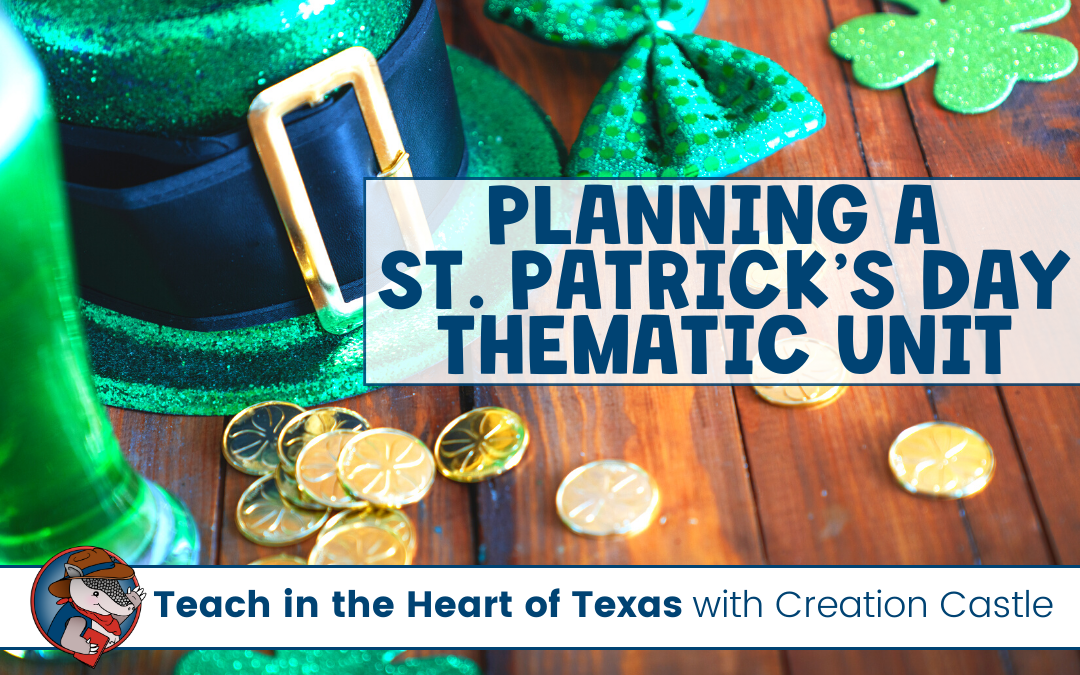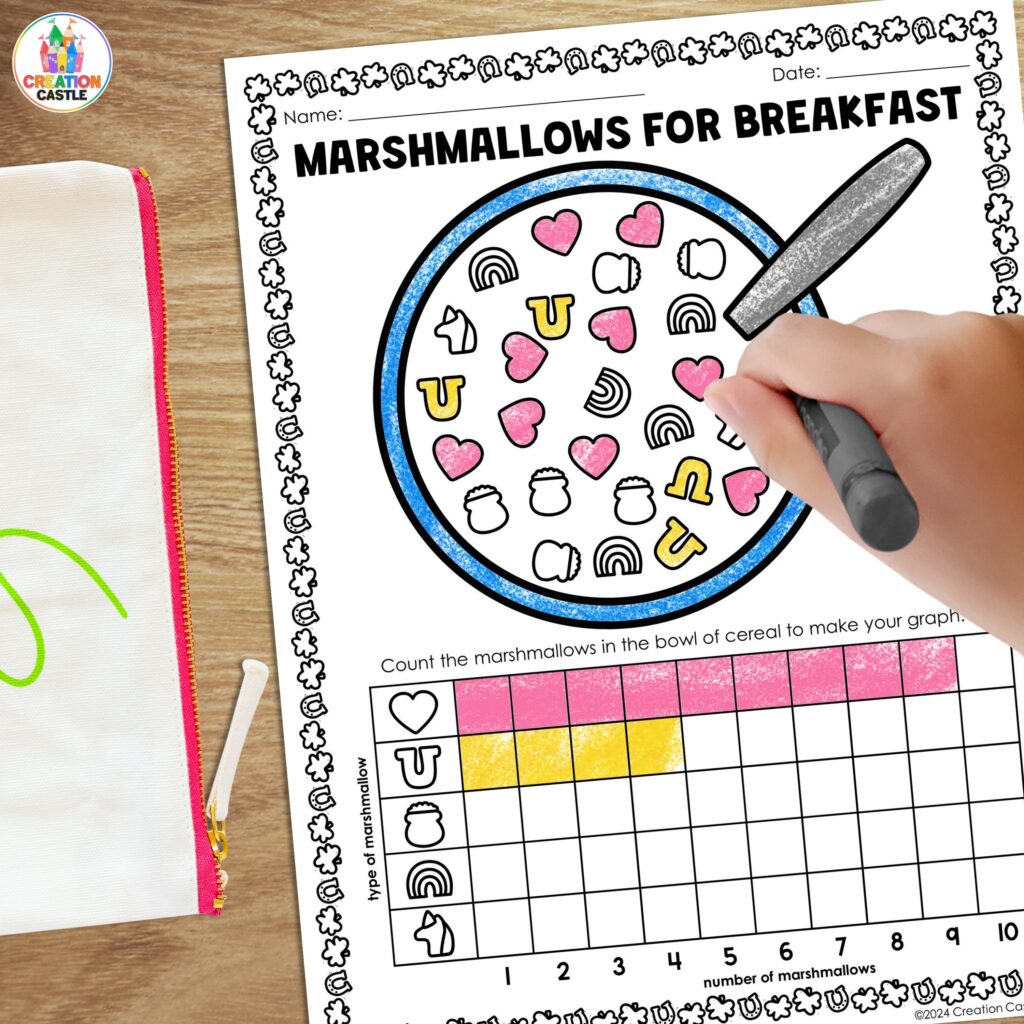There are a few approaches you can take when writing your lesson plans. My favorite way has always been by selecting a theme and looking at how you can teach standards through that lens.
Thematic units offer a fantastic opportunity to engage your students while covering a variety of subjects or topics.
In this post, we’ll explore the process of planning a thematic unit using St. Patrick’s Day as your theme!
Find it Fast
Choose Your Theme
Choosing a theme is the starting point for any thematic unit. There are several ways to go about choosing your theme, but these are probably the most common ways to come up with a theme.
- consider your students’ interests
- align with your standards or box curriculum
- seasonal and timely themes
In this post, we’ll focus on using St. Patrick’s Day for your thematic unit, which is especially suitable for March. St. Patrick’s Day offers not only a fun theme but also the potential to explore key concepts throughout the spring season.

Identify Learning Objectives
The next step of planning your thematic unit is identifying learning objectives for your students. It’s important to remember that a theme is secondary to your objectives.
The most important part of teaching your students is covering the standards – not making everything fun. It’s certainly a bonus when you can make learning fun and exciting for your students, but that won’t always be the case.
Make sure you aren’t prioritizing a theme over your current learning objectives.
I can’t do this step for you, because everyone is on a different pacing schedule. So, before you continue, jot down the objectives for your core concepts over the next few weeks (or however long you plan to use this theme).
St. Patrick’s Day Key Concepts
Next, we get to dive into the theme a bit more. At this point, you want to brainstorm any concepts that are related to the theme.
For a St. Patrick’s Day thematic unit, brainstorm concepts that tie into the celebration. Think beyond the traditional symbols of shamrocks, leprechauns, or pots of gold. Consider more generic yet related elements like rainbows, the color green, or the concept of spring. These broader concepts can extend the theme’s relevance beyond St. Patrick’s Day itself.
Cross-Curricular Planning for St. Patrick’s Day
Now that you’ve identified your learning objectives and thought about some of the concepts related to the theme, it’s time to start thinking about integrating your core subjects with the theme.
Here are a few ideas to get you started, but remember to focus on your learning objectives first!
Language Arts Ideas
St. Patrick’s Day Stories
Leprechaun Letter Sounds
Rainbow Writing
If I found a pot of gold… Writing
Rainbow Rhymes
Math Ideas
Rainbow Patterns
Shamrock Shapes
Rainbow Number Bonds
Graphing Lucky Charms
Counting Gold Coins
Science Ideas
Rainbow Colors Exploration
Shamrock Planting
Gather St. Patrick’s Day Activities and Resources
Now comes the fun part… or the overwhelming part depending on your viewpoint. Personally, I love this part of the process!
There are so many great resources available for free or to purchase that sometimes it can be difficult to know if you are choosing the right resources for you and your students.
Transform Your Classroom Environment for St. Patrick’s Day
This step is completely optional and is the first thing I would cross off your list if you are limited on time or energy! Transforming your classroom can really help students lean into your themes, but I know this can be an exhausting step. Don’t worry, your students will have just as much fun even if you can’t turn your classroom into a leprechaun village!
In fact, I would opt for something that would last a little longer so you aren’t changing your classroom space every week. This is where those more broad concepts related to a theme come into play.
For St. Patrick’s Day, opt for a more versatile theme, like rainbows. This not only suits the holiday but can seamlessly transition into a weather unit and carry throughout the spring season!
When planning your St. Patrick’s Day thematic unit, embrace the creativity and excitement that thematic units can bring to your classroom. By aligning this fun holiday with learning objectives and integrating your core subjects, your students can have fun with their learning!

Creation Castle
Heather is the author of Creation Castle. She has experience with general education, special education, and ESL students in kindergarten through fifth grade. She specializes in early elementary math and literacy, as well as organization.















